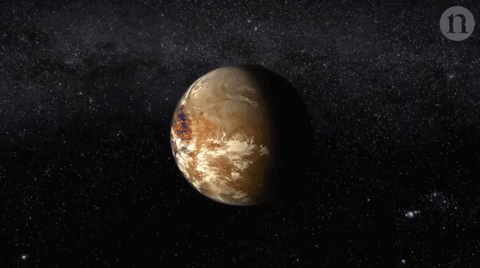The discovery of Proxima b, an exoplanet orbiting a star just 4.2 light-years away from Earth, has raised many questions about the possibility of life beyond our solar system. Proxima b is located in the habitable zone of its star, meaning that it is at the right distance from its star for liquid water to exist on its surface, a crucial ingredient for life as we know it.
Recent studies have suggested that Proxima b may have a large ocean that increases the possibilities that it may harbor life. This has generated significant interest among scientists and researchers who are studying the planet and its potential for supporting life.
Proxima b has a mass of just about 1.3 times that of Earth, making it a potentially rocky planet similar in composition to our own. Its red dwarf star is also around the same age as our Sun, further increasing the likelihood that it could support life.
Overall, the discovery of Proxima b and the ongoing study of exoplanets are critical areas of research in astronomy and astrophysics. By studying these objects and their properties, scientists and researchers can gain a deeper understanding of the processes that shape the universe and our place within it.
.png)
It is true that studies over the past few years have both raised and dashed expectations regarding the habitability of Proxima b. However, a recent study suggests that the exoplanet may be capable of supporting life once more under certain circumstances.
According to the study, which was conducted by the NASA Goddard Institute for Space Studies, Proxima b may support liquid water in the right conditions. Planetary scientist Anthony Del Genio notes that “the main message from our models is that there’s a fair likelihood that the planet would be livable.”
This is an exciting development in the study of Proxima b and the potential for life beyond our solar system. However, it is important to remember that much more research and exploration is needed to fully understand the planet and its potential for supporting life.
Overall, the ongoing study of exoplanets and their properties is a critical area of research in astronomy and astrophysics. By continuing to study and understand these objects, scientists and researchers can gain new insights into the workings of the universe and our place within it.

The recent study published in the journal Astrobiology is purported to be the first to simulate Proxima b’s climate with a dynamic ocean. The planet, which has a mass of about 1.3 times that of Earth, orbits a red dwarf star called Proxima Centauri that is around the same age as our Sun. Proxima b is believed to be tidally locked to its star, creating a perpetual “dayside” and “nightside.”
The study’s simulations suggest that Proxima b may have a relatively stable climate and could support liquid water on its surface under certain conditions. This is an exciting development in the ongoing study of Proxima b and the potential for life beyond our solar system.
However, it is important to note that these simulations are based on various assumptions and models, and much more research and exploration is needed to fully understand Proxima b and its potential for supporting life.
Overall, the study of exoplanets and their properties continues to be a critical area of research in astronomy and astrophysics. By continuing to study and understand these objects, scientists and researchers can gain new insights into the workings of the universe and our place within it.

The new study, which simulates Proxima b’s climate with a dynamic ocean, suggests that the planet could harbor a small dayside surface ocean despite its weak instellation. The simulations show that with a dynamic ocean, a hypothetical ocean-covered Proxima b with an atmosphere similar to modern Earth’s could have a habitable climate with a broad region of open ocean, extending to the nightside at low latitudes.
This is an exciting development in the ongoing study of Proxima b and the potential for life beyond our solar system. However, it is important to remember that these simulations are based on various assumptions and models, and much more research and exploration is needed to fully understand the planet and its potential for supporting life.
Overall, the study of exoplanets and their properties continues to be a critical area of research in astronomy and astrophysics. By continuing to study and understand these objects, scientists and researchers can gain new insights into the workings of the universe and our place within it.

The researchers who conducted the study on Proxima b’s climate with a dynamic ocean modeled for different salinity levels and atmospheric greenhouse gas concentrations to better understand the potential for liquid regions on the planet’s surface. They found that in more than a dozen simulations, Proxima b almost always had some sort of liquid ocean. However, the simulations also showed that any liquid water on the planet would be at much colder temperatures than previously suggested.
The researchers noted that an ocean-covered Proxima b could have a much broader area of surface liquid water, but at much colder temperatures due to ocean heat transport and/or depression of the freezing point by salinity. This underscores the challenges and complexities involved in studying exoplanets and their potential for supporting life.
Overall, the ongoing study of exoplanets and their properties is a critical area of research in astronomy and astrophysics. By continuing to study and understand these objects, scientists and researchers can gain new insights into the workings of the universe and our place within it.
Soucre: news.sci-nature.coм








